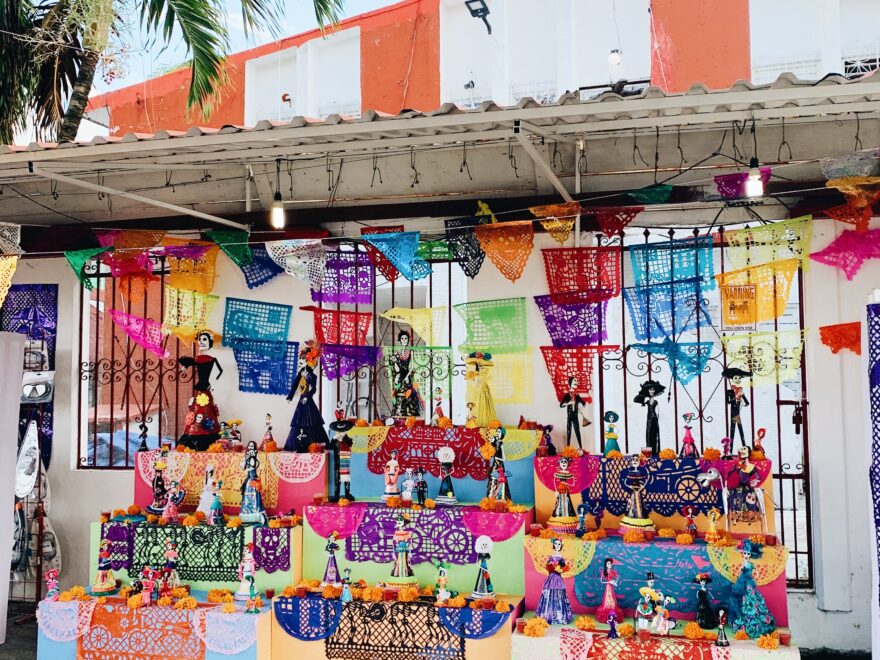This quarter Dr. Lydia Saravia is teaching LSP 200 Border Cultures which has been focused on examining the political climate between the U.S. and Mexico borders. Her class recently worked with local artist Norma Sierra Rios to host a celebration of Dia de Los Muertos. The celebration was also held in collaboration with the Logan Square Neighborhood Association.
Q: How did you find Norma Sierra Rios?
A: Norma is an established local artist. She has worked with several organizations and Chicago Public Schools. In addition to her mosaic art pieces that can be seen around Chicago, Norma is known for the creation of the Sugar Skulls. She has been creating Sugar Skull kits for a few years now, and currently, she makes over 4,000 sugar skulls for the Day of the Dead.
Q: Can you tell us why Norma made a good partner for the sugar skulls project?
A: Norma makes the sugar skulls and is an artisan who can speak to the cultural relevance of Day of the Dead. For her, it’s not a matter of creating skulls for people to simply decorate. She informs people [of] the significance of Day of the Dead.
Q: What did the Comfort Station event on October 30 entail?
A: On October 30ththe Comfort Station, in collaboration with Logan Square Neighborhood Association, hosted the very first Day of the Dead event in Logan Square. The event was important, and a reminder of the shift and changes to the area.
[Logan Square is historically a Mexican neighborhood that has been gentrified in recent years.]
The event had free food, music from Jarochicanos, and story-telling. Further, several artists were invited to create an altar, including artists from AnySquared Projects, Naomi Monstrochika Martinez, Barry “Flash” Allen, and Divine Art Book, to name a few. This quarter’s LSP 200 that I teach was also invited to participate because of the theme of the course: Border Culture.
Q: Is there anything you want people to know about Border Culture at large? Any major takeaways folks should be aware of who aren’t taking your class?
Border culture is not easy to define. Several artists define it as two cultures coming together or clashing. Border culture as an artistic exploration can be defined as identity negotiation, whether that means in contrast or not. One thing I tell the LSP 200 students in my course is that regardless [of] what we discuss (whether through a political, geographic, economic, environmental, psychological, etc lens) , it is important that we keep in mind that human lives are impacted by decision[s] along the U.S.-Mexico border. Humanizing the people (and not [just] data or statistics) is both important and the Vincentian way. In participating in Day of the Dead activities, we participate in a cultural practice that remembers the human life and spirit.
